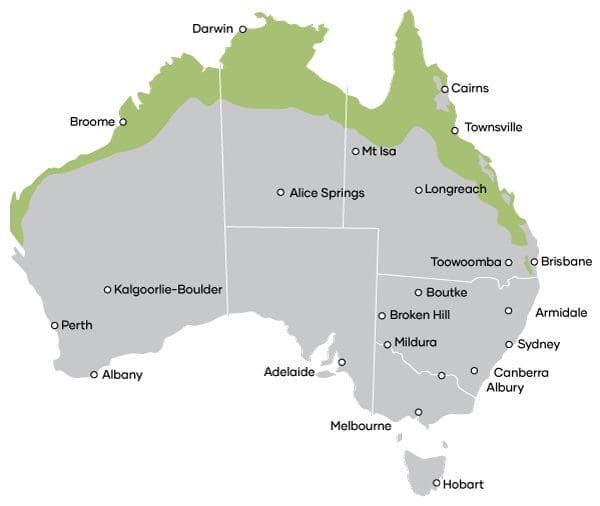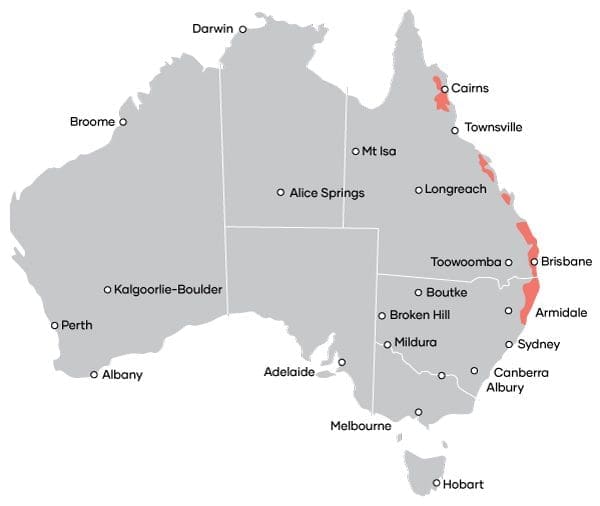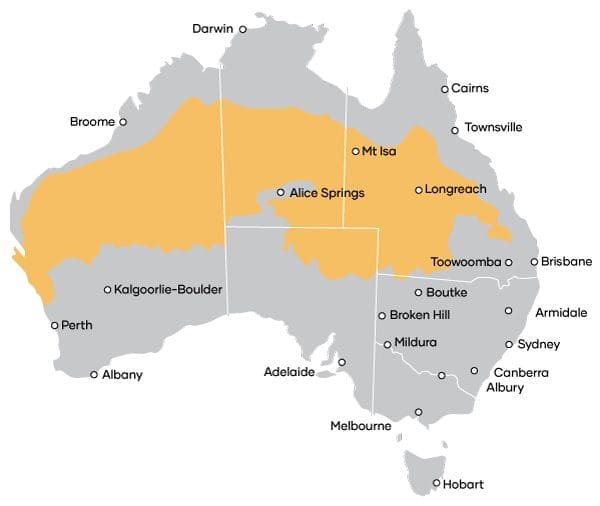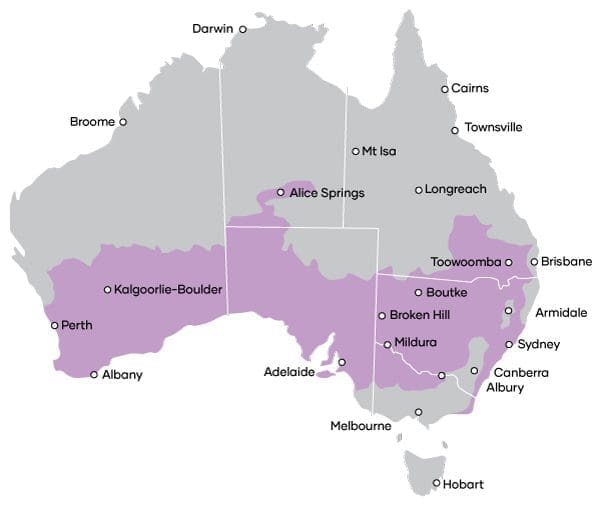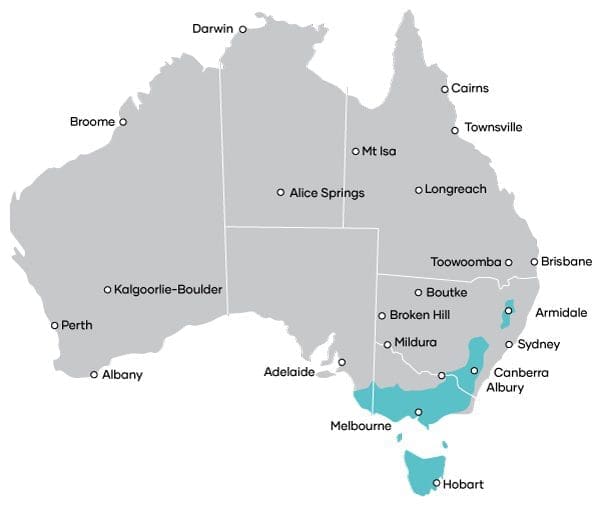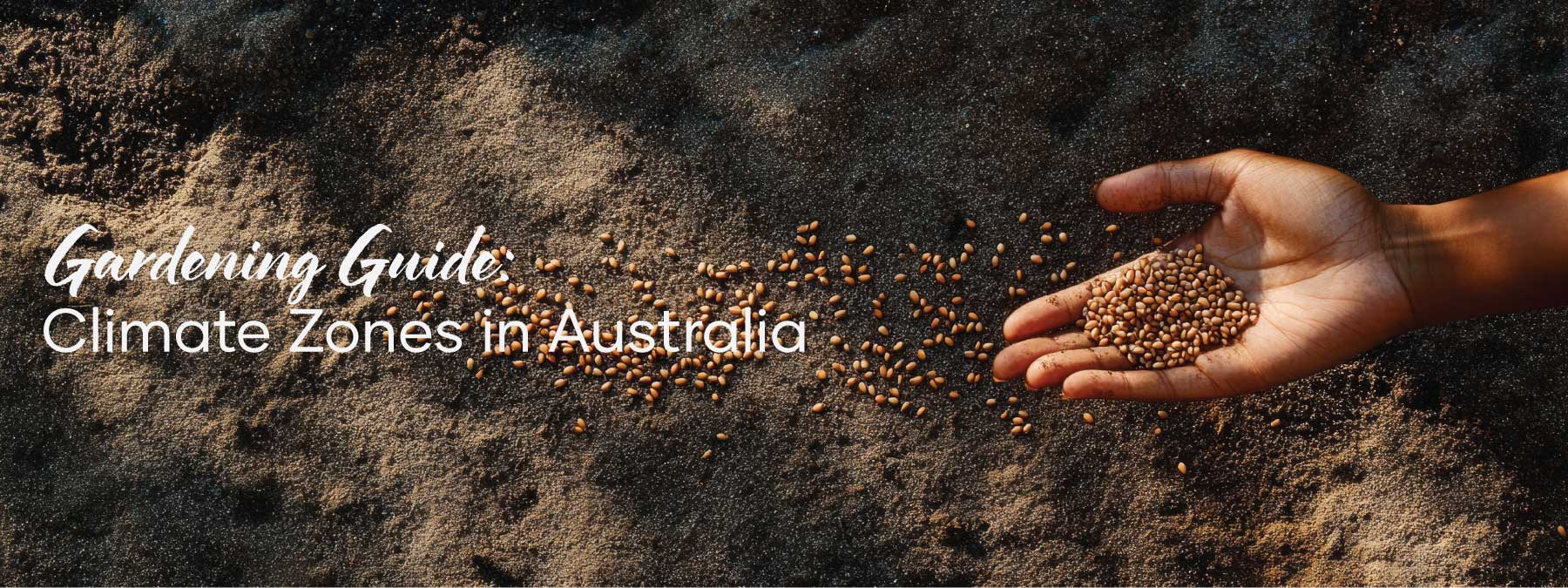
Gardening is already hard work, but trying to grow the wrong plants makes it even harder. If you don’t grow what suits your area and the right time of year, you will always struggle. This is why many gardeners end up using pesticides and fungicides. Plants that aren’t suited to your climate become weak, stressed, and get attacked by pests and diseases more easily.
This guide will help you:
Work out your climate zone
Knowing your climate zone helps you pick the best plants for your area and the right times to plant them. Many people don’t realise that where you live affects what you can grow. If you grow your own fruit and vegetables, your climate shapes what you eat.
Focus on plants that grow well where you live
If you’re new to gardening, start by growing plants that already do well in your region. Take some time to learn about your local climate. This effort will help you succeed. Check the Bureau of Meteorology, local gardening groups, and local newspapers to build a clear picture of your conditions.
Start your own gardening diary
Keep a diary to record when you plant, when frosts happen, and when pests appear. This will help you learn faster. Over time, gardening terms will start to make sense, and you’ll enjoy the process of working with the seasons and growing your own food.
Understand microclimates in your garden
Learning about your climate zone is only the start. Every garden has its own microclimates. For example, if you live on a hill, each side—north, south, east, and west—will have slightly different temperatures, sunlight, and wind. The east side gets gentle morning sun but can be prone to frost. The west side is hotter and drier. Cold air often settles in low spots at night, bringing more frost there.
Tropical and Equatorial Zones
Where
The hot, humid zone covers the Northern Territory coast, northern Western Australia, Cape York, and the northern Queensland coast above Mackay.
Characteristics
Temperatures stay high all year with no frost. The lowest average temperature is about 15°C. There are two main seasons—a wet season in summer with heavy rain and a dry season. The build-up to the wet season is hot and sticky without much rain. Gardening here can be hard, especially if you’re new to the tropics. Heavy rain can damage crops, pests can multiply quickly, and termites can attack trees. You may need to try new vegetables, but it is possible to grow plenty of food. Good tropical crops include sweetleaf, winged beans, sweet potatoes, chokos, yams, kangkong, and pawpaw. Leonie Norrington’s book *Tropical Food Gardens* is a helpful resource.
Subtropical Zone
Where
This zone includes the east coast from Coffs Harbour in NSW through Brisbane to Mackay. In WA, it covers the coast north of Exmouth to Broome and inland to Halls Creek.
Characteristics
The subtropics have warm, wet summers and mild winters with little frost. The lowest average temperature is about 10°C. Many temperate vegetables can still grow here, but you need to plant them in winter and early spring. If you plant too late, the heat will make them go to seed too soon. Tubers like sweet potato, cassava, yacon, and jicama grow very well. Many subtropical gardens also grow the same perennials as the tropics.
Desert and Grassland Zones
Where
Central Australia.
Characteristics
This area has very hot summers, high evaporation, and long dry periods. The north is hot and dry in summer with mild winters. The south has hot, dry summers and cold winters, with the coldest temperatures around -5°C. Growing under shade cloth helps protect plants like lettuce from bolting too early.
Warm Temperate Zone
Where
This zone includes inland Queensland, the NSW tablelands, and coastal areas south of Sydney to Coffs Harbour. In WA, it covers the coast south of Exmouth to Geraldton and inland to Meekatharra.
Characteristics
There are cool winters with light frosts and warm summers. Rain falls fairly evenly all year. The lowest average temperature is about 5°C. Coastal areas can grow some subtropical plants thanks to the ocean’s moderating effect. Frost can help control pests and can improve the taste of vegetables like parsnips. Some fruit trees need winter chill to grow well.
Cool Temperate and Alpine Zone
Where
This zone includes Tasmania, Canberra, Melbourne, the ACT, the NSW Southern Tablelands, high areas of Victoria, and the alpine regions.
Characteristics
Winters are cold with heavy frosts and sometimes snow. The cold helps reduce pests and allows you to grow fruit trees like cherries that need winter chill. Summers are warm but short, so start seeds early using a heated propagator. In-ground planting can be tricky—often the soil isn’t warm enough for beans until late October or November. New gardeners should start with fast-growing crops while they learn how to manage the seasons. It can be disappointing when frost arrives before tomatoes and eggplants finish ripening, so planning ahead is important.

